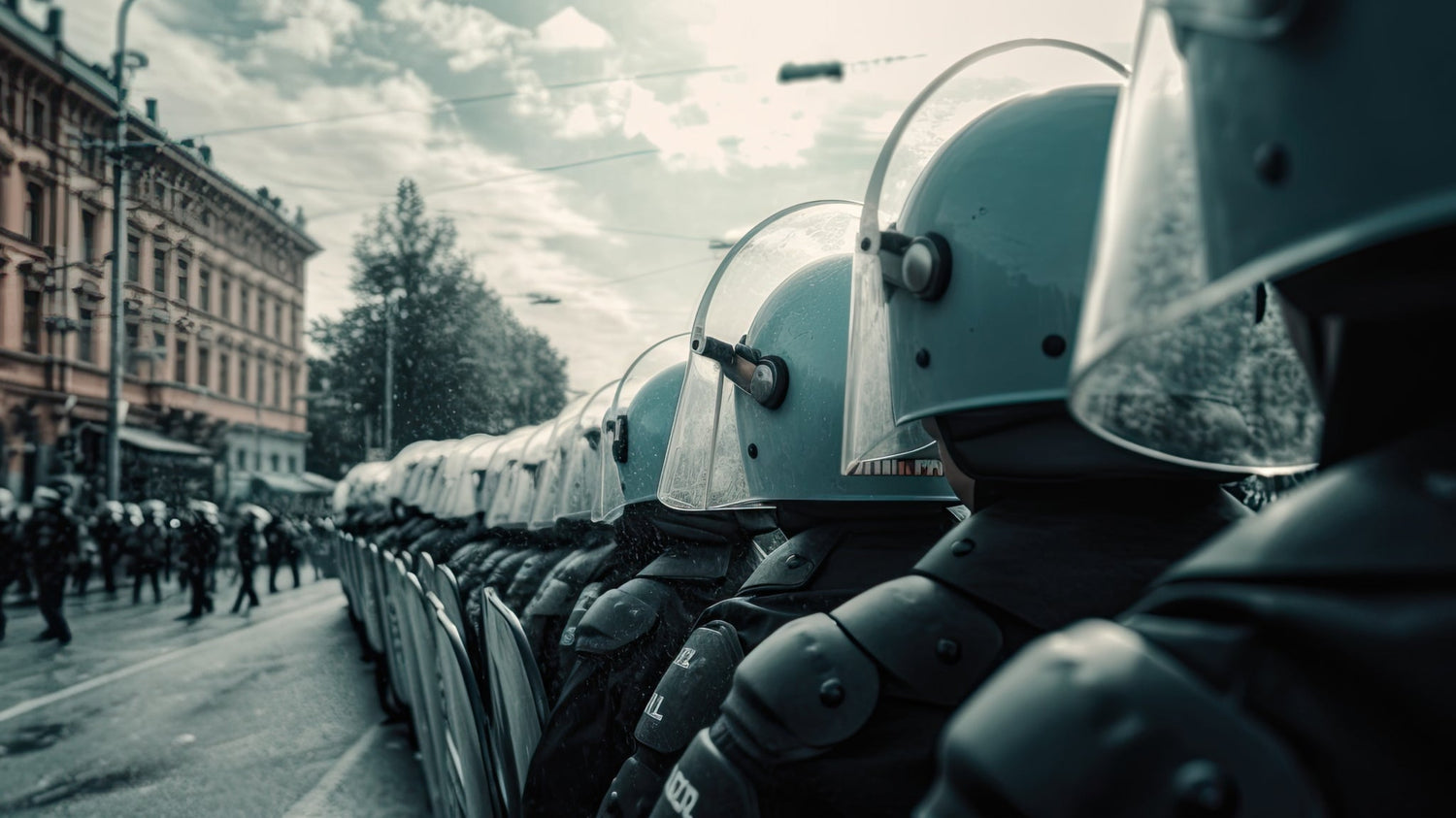Civil unrest and riots can occur with little warning, often triggered by political events, social injustice, economic crises, or other contentious issues. For those living in urban areas where riots are a possibility, preparedness can be the difference between safety and harm. In this blog post, we’ll discuss how to prepare for potential riots and why owning a gas mask can be essential, even if you're not actively involved in the chaos.
Stay Informed
Knowledge is Power: The first step to preparing for a riot is staying informed about what's happening in your community. Monitor local news outlets, community forums, and social media channels for real-time updates. Awareness of potential unrest gives you time to prepare or leave the area if necessary.
Secure Your Home
Fortify Your Residence: Whether you own a home or rent an apartment, ensure your residence can withstand being in the vicinity of a riot. Reinforce doors, consider window guards, and have a plan to extinguish small fires. Keep an emergency kit with essentials like water, non-perishable food, and a first aid kit.
Plan for Communications
Reliable Communication Channels: Have a battery-powered radio and consider alternative communication methods like walkie-talkies. Mobile networks can be overwhelmed or shut down during riots, so having a backup way to communicate is critical.
Gas Masks: A Necessity for Urban Survival
Protecting Your Airways: A gas mask is not just for those on the front lines. Police often use tear gas and pepper spray to disperse crowds, which can spread far beyond the immediate area of unrest. These substances can cause severe respiratory distress, disorientation, and pain.
Choosing the Right Mask: Ensure you have a quality gas mask designed to filter out chemical irritants. Look for masks with proper sealing and filtration capabilities. A good gas mask should cover the entire face and include a filtration system for various chemical agents used in riot control.
Personal Safety
Avoiding Confrontation: The safest place during a riot is at home, away from the chaos. If you must venture out, avoid areas where a riot may occur and always have an exit strategy.
Self-Defense: Consider taking self-defense classes and having non-lethal means of self-defense. However, the goal should always be to de-escalate or escape rather than confront.
Transportation
Mobility Options: Keep your vehicle's gas tank at least half full, and be aware of multiple routes out of your neighborhood. In case driving isn't an option, have a bicycle or good walking shoes handy.
Legal Considerations
Understanding the Law: Be aware of your rights and local laws regarding curfews and gatherings. During riots, special legal orders can be in place that restrict movement and activities.
Mental Preparation
Stay Calm: Panic can be as dangerous as the riot itself. Practice stress-relief techniques and have a plan; this will help you stay calm and think clearly if unrest occurs.
Conclusion
Riots can be unpredictable and can escalate quickly, making it crucial to be well-prepared before they happen. Remember that personal safety extends beyond physical protection—being mentally and legally prepared is equally important. A gas mask might seem extreme for everyday life, but in the event of a riot, it could prove to be one of your most important tools for keeping safe, even if you're not directly involved in the conflict. Stay safe, stay prepared, and prioritize your well-being in times of civil unrest.





















Leave a comment
All comments are moderated before being published.
This site is protected by hCaptcha and the hCaptcha Privacy Policy and Terms of Service apply.